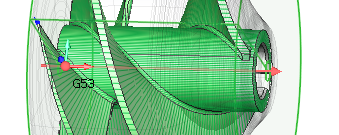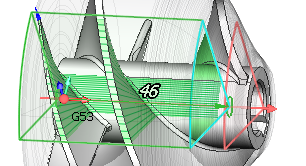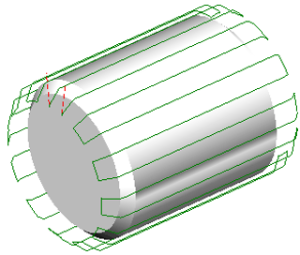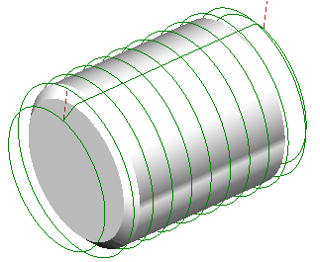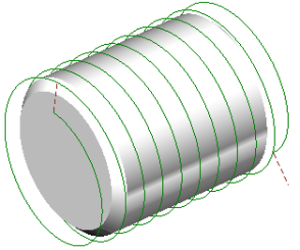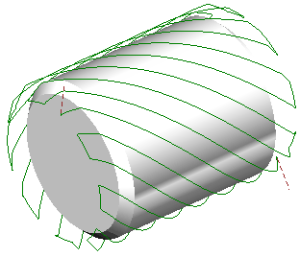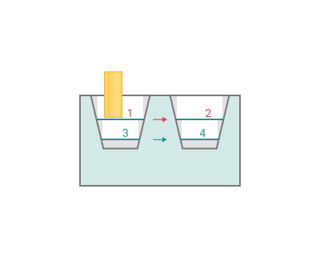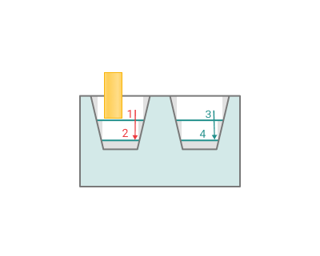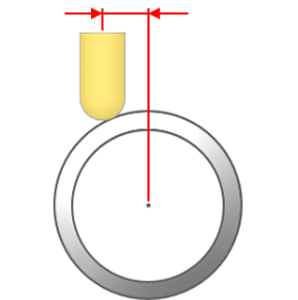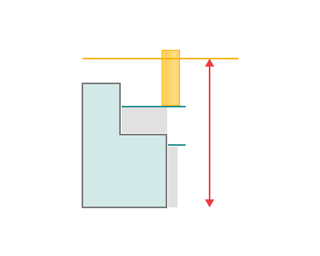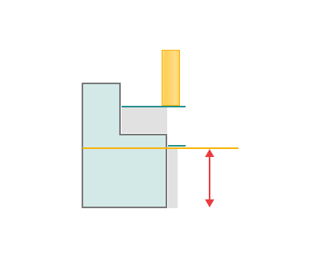Rotary Roughing operation
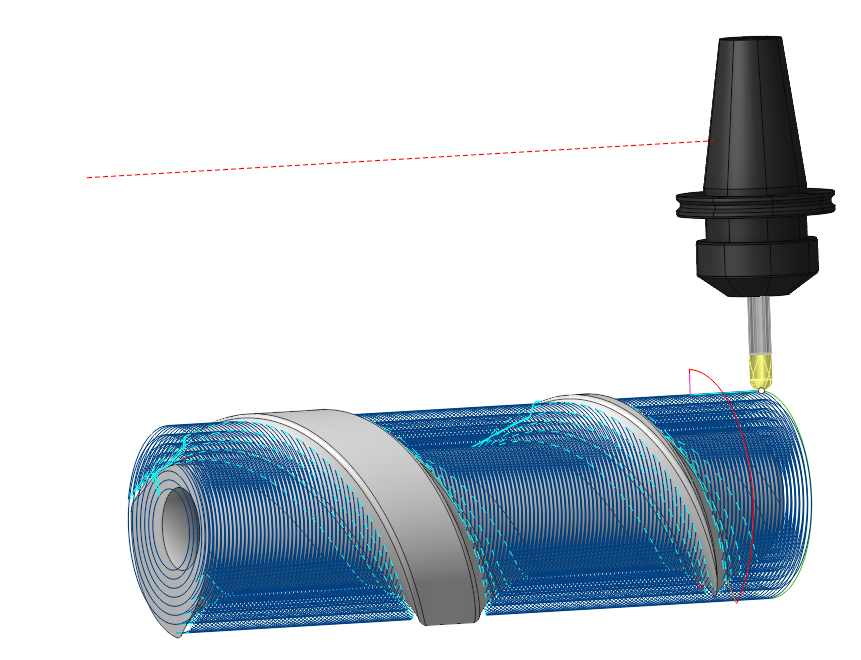
Application Area:
Rotary Roughing is a continuous rough four-axis machining operation that removes the workpiece material layer by layer. It is similar to the Roughing Waterline operation except that the machining layers are not planes, but cylinders with their axis aligned along the Rotary Axis .
Job Assignment:
Spiral curve. The curve needed to indicate the angle of the spiral for the strategy Side angle.
Top Level. Specifying the top level by model elements. This level defines the maximum radius on the model where machining happens. See more
Bottom Level. Specifying the bottom level by model elements. This level defines the minimum radius on the model where machining happens. See more
Properties. Displays the properties of an element. It is possible to add the stock. You can also call this menu by double clicking on an item in the list.
Delete. Removes an item from the list.
Restrictions. It allows you to restrict areas that should not be machined. See more
Strategy.
Job zone.
It enables additional modification of the working area initially selected on the Job Assignment tab.
Trajectory form.
The trajectory output format.
Milling Type.
Сan be assigned in almost all operations, except for the curve machining operations. This allows the user to control the required milling type (climb or conventional) during the toolpath calculation process.
The parameters of the Milling Type are the same. as in the Waterline Roughing operation. See more.
Tool contact point.
Tool Contact Point (TCP) is a specific location on a cutting tool that defines the primary interaction point between the tool and the workpiece surface or geometric entities during machining operations.
The parameters of this group are the same as in the 5D Surfacing operation . See more.
Sorting.
Controls the sequence of toolpath passes during surface machining.
Offset.
The point towards which the tool is oriented can be offset from the Rotary Axis by the specified value . It can be specified to improve the cutting conditions. The offset can be defined as absolute value or as the percents of the tool diameter. It can be positive or negative.
Machining levels:
It defines the range along tool axis for the machining.
Links/Leads:
In the Links/Leads tab, you define the parameters for rapid movements. These movements include tool approach from the tool change position, engage to the start of the working stroke, retraction after the final cutting motion, transitions between working passes, and return to the tool change point. You can configure the sequence of movements along the coordinates, the trajectory of these motions, and the magnitude of displacements.
Feeds/Speeds:
Using this dialogue the user can define the spindle rotation speed; the rapid feed value and the feed values for different areas of the toolpath. Spindle rotation speed can be defined as either the rotations per minute or the cutting speed. The defining value will be underlined. The second value will be recalculated relative to the defining value, with regard to the tool diameter. See more
Transformations:
Parameter's kit of operation, which allow to execute converting of coordinates for calculated within operation the trajectory of the tool. See more.
Part:
A Part is a group of geometrical elements that defines the space to check for gouges. See more
Workpiece:
A workpiece model of an operation defines the material to be machined. See more
Fixtures:
As the Fixtures the fixing aids such as chucks, grips, clamps, etc., and the restriction areas of any other nature are usually specified. See more
